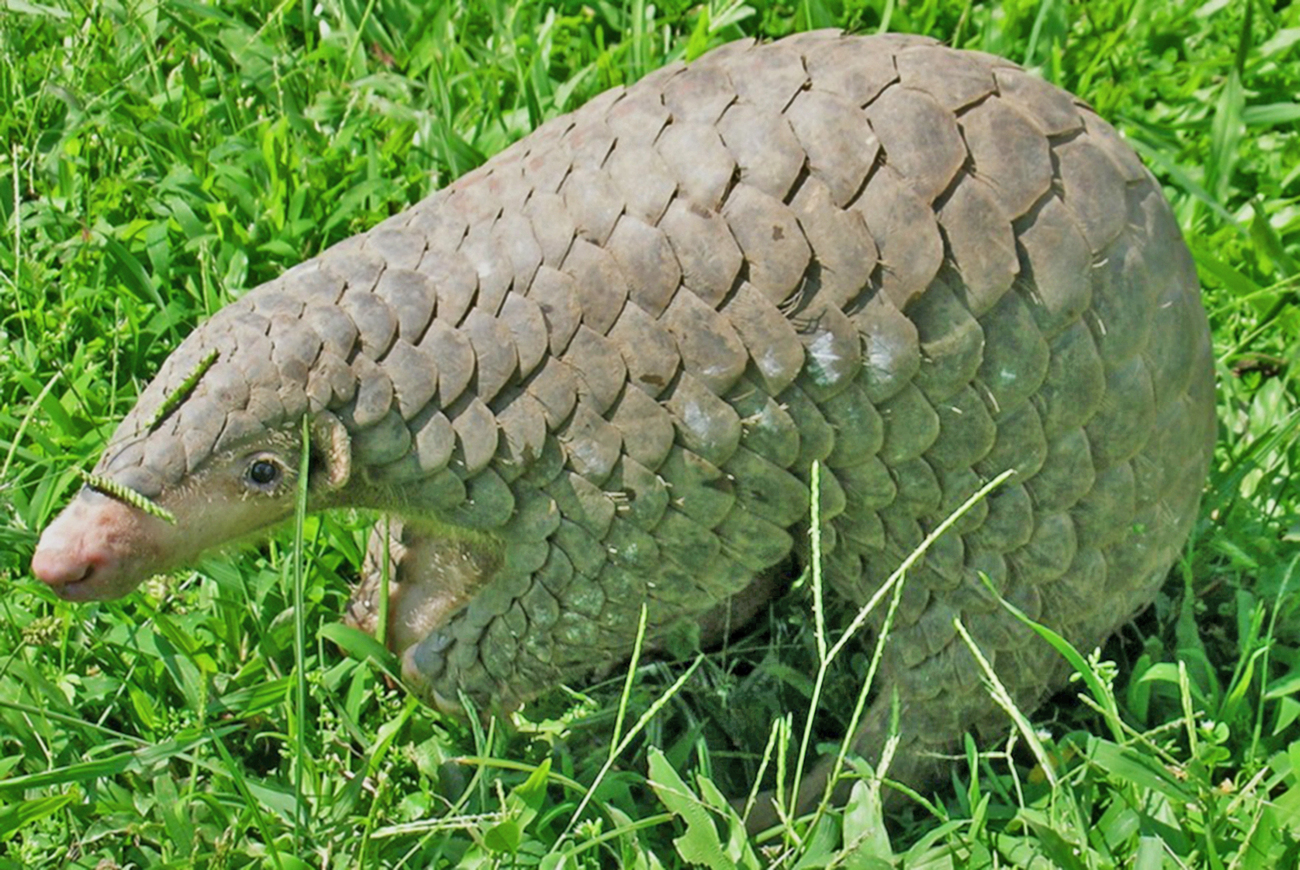Blog
Discover the four layers of the forest—and the animals living in it
Read morepangolins: ecosystem gardeners worth conserving

Pangolins aren’t your average mammals. The eight living pangolin species would give even the platypus a run for its money in a contest for most whimsically constructed animal. These shy, solitary mammals are clothed head to powerful tail in an armor of overlapping scales made of keratin, evoking images of ancient reptiles or the result of a romantic encounter between an armadillo and an artichoke. With small heads, jaws devoid of teeth, sickle-like claws, and sticky tongues that can extend up to half the length of their bodies, pangolins truly are wonders of biology.
Beyond their unique physiology, pangolins perform crucial ecosystem services in the Asian and African habitats they call home as they slurp up mass amounts of ants and termites and dig into the ground to create living spaces and to access their insect meals. “By their behavior of excavating burrows, they actually affect the soil processes, including turning over organic matter and aerating the soil,” says Neil Greenwood, IFAW’s director of wildlife rescue. “They’re essentially little gardeners.”
Additionally, abandoned pangolin burrows are often used by other animals sharing their habitats, providing yet another benefit to the species with which they share wild places.
To satiate their outsized appetites, pangolins also rip apart rotting logs and termite mounds and root out rocks and hard packed earth in the jungles and savannahs where they live. This further contributes to the mechanical breakdown of organic and inorganic matter that aids in the cycling of minerals and nutrients through these ecosystems.
Greenwood adds that pangolins help to regulate populations of termites and ants by way of their voracious appetites. Some estimates hold that one adult pangolin can put away more than 70 million insects—which can include crickets, flies, and other insect species, in addition to ants and termites—per year. A healthy population of pangolins can serve as potent pest controllers if allowed to live their lives freely.
Their charismatic appearances and utility in the ecosystems they inhabit belie a dark truth about pangolins: they are thought to be the most trafficked mammals in the world.
Pangolins’ unique scales and impressive claws have long been used in traditional medicine or for adornment, and the animals are also hunted for their meat across their natural ranges. Their skins are used to make high-demand items like bags, belts, boots, and other leather products. And like many imperiled animal species, pangolins have been impacted by habitat destruction across their range as agriculture and other human activities gobble up wild spaces. According to a 2020 book, more than 890,000 pangolins were trafficked globally from 2000-2019.
Because pangolins produce relatively few offspring typically only once per year, their numbers in the wild have dwindled over the years. The International Union for Conservation of Nature (IUCN) lists three pangolin species—the Chinese pangolin, the Sunda pangolin, and the Palawan pangolin—as critically endangered. Three other species—the Indian pangolin, the white-bellied pangolin, and the giant pangolin—are listed as endangered. And IUCN has designated the ground pangolin and the black-bellied pangolin as vulnerable.
While China did introduce laws to protect pangolins in 2020, including prohibiting the killing of the Chinese pangolin and outlawing the use of pangolin scales in traditional medicine, the unique mammal still occupies a precarious branch on the tree of life. Without changes to human behavior and protections for pangolins, this one-of-a-kind gardener may be lost forever.
Our work can’t get done without you. Please give what you can to help animals thrive.
Unfortunately, the browser you use is outdated and does not allow you to display the site correctly. Please install any of the modern browsers, for example:
Google Chrome Firefox Safari